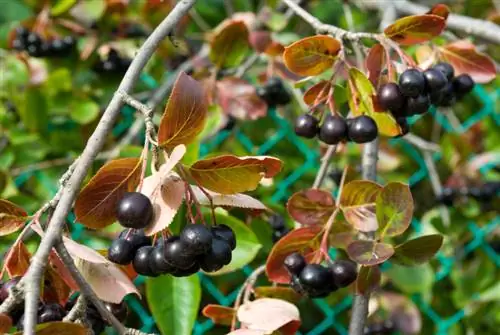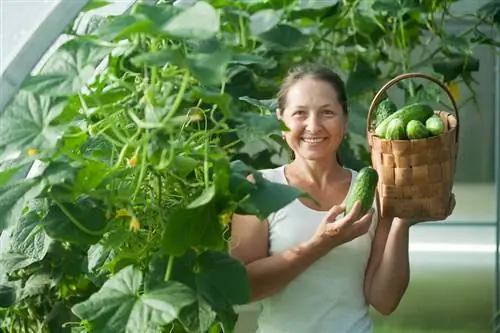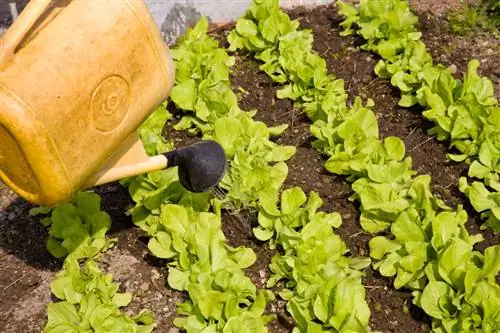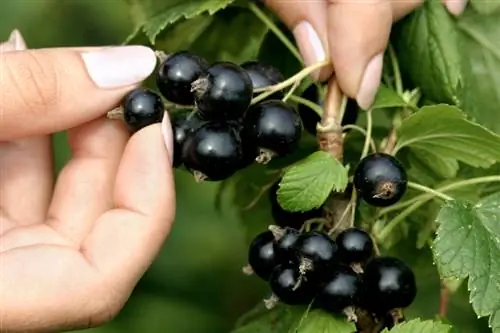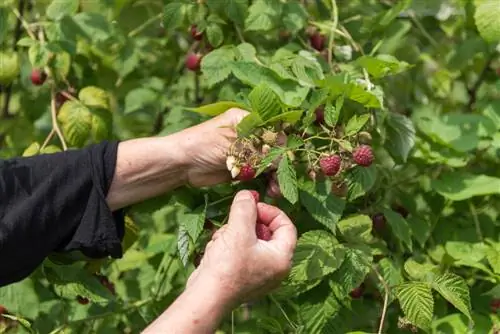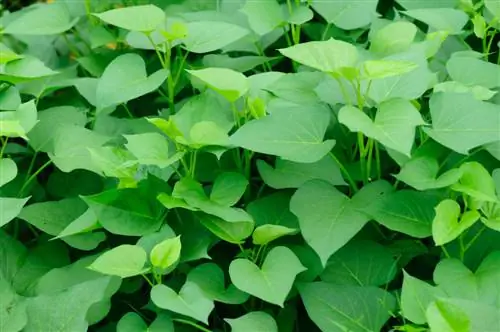- Author admin [email protected].
- Public 2023-12-16 16:46.
- Last modified 2025-06-01 06:02.
You really can't go wrong when it comes to caring for your chokeberry (or aronia berry). The shrub is robust, undemanding and extremely easy to care for. Ergo, aronia is the perfect plant for gardeners without a “green thumb”. If you follow these tips, you can look forward to a bountiful harvest in the fall.
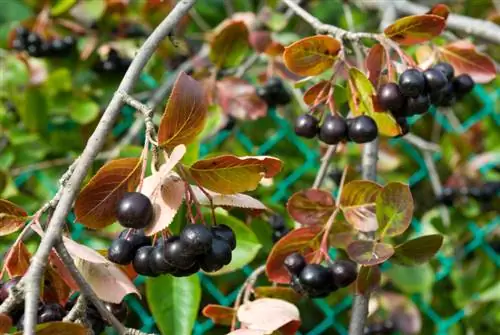
How do I care for the aronia berry properly?
Caring for the chokeberry (aronia berry) is simple: choose a sunny location, water when necessary, fertilize rarely with organic fertilizer and prune annually for thinning. The plant is frost hardy, the root area of potted plants should be protected.
Which location is ideal?
Aronia bushes love the sun! The more sun they get, the more fruit they produce. Therefore, it is in your own interest to ensure that your aronia is in as sunny a location as possible. Locations with sufficient soil and air moisture are also optimal, while a high lime content in combination with drought has a rather unfavorable effect. Otherwise, chokeberries are extremely adaptable to different soil conditions.
Can I put an aronia bush on my balcony?
Yes, that is possible. However, the bucket should be sufficiently large and deep, because aronia bushes develop deep roots. It is advisable to choose one of the smaller varieties - for example “Hugin” - as some cultivars can grow very tall. In addition, potted plants should be watered and fertilized regularly.
How often do I have to water my aronia bushes?
Basically, it is not necessary to water the aronia bushes. The only exceptions are if there is a period of strong heat/dryness or if the soil is rather sandy. Sandy soils store water poorly and are therefore often too dry. An annual rainfall of between 500 and 600 millimeters is optimal - but as a gardener you usually have no influence on the frequency of the rain.
How often does Aronia need to be fertilized? And with what?
Aronia bushes rarely need to be fertilized. Organic fertilizer such as: B. stable manure. Potted plants can be adequately supplied with horn meal (€6.00 on Amazon) and compost soil.
When and how can the bushes be pruned?
Similarly, the bushes do not need to be pruned. An annual pruning to thin out the shoots is sufficient.
Diseases and pests
Both diseases and pests are rarely observed. Very rarely, an infestation with frost moths or mountain ash moths occurs.
Propagation and cultivation
It is possible to propagate by seeds; However, it is easier to get new bushes from cuttings. Breeding from cuttings is much quicker and you are also protected from surprises. In contrast to seeds, cuttings have the same genetic makeup as the carrier plant, while mutations can occur in successors grown from seeds.
What to do in winter?
In this respect too, the chokeberry is pleasantly uncomplicated. The Northern European varieties in particular are very frost hardy - down to -30 °C - and can survive harsh winters excellently. However, potted plants should be protected from severe frost, otherwise they will die of thirst. For this purpose, you can cover the soil in the pot with pine branches or coconut mats.
Tips & Tricks
You can easily grow a standard tree from the bushy shrub. To do this, graft a well-developed Aronia plant eye onto the young trunk of a rowan tree. The best way to do this is a technique called “oculation”.

